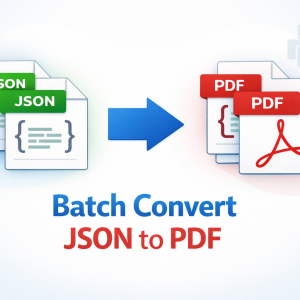As the oil and gas industry evolves toward safer, more efficient, and cost-effective operations, automated drilling systems have emerged as a transformative technology. These systems combine robotics, sensors, data analytics, and real-time control mechanisms to improve drilling accuracy, reduce human intervention, and optimize rig performance.
What Are Automated Drilling Systems?
Automated drilling systems are integrated technologies that allow drilling operations to be performed with minimal human input. Unlike traditional manual drilling, automated drilling systems utilize advanced control algorithms, machine learning models, and real-time monitoring tools to automate routine and complex drilling tasks. This includes drill bit steering, weight on bit control, pressure regulation, and more.

Key Components of Automated Drilling Systems
Downhole Sensors and Tools: Measure temperature, pressure, formation properties, and directional data.
Surface Control Systems: Interface with rig hardware and software to control pipe handling, fluid circulation, and equipment operation.
Data Analytics Platforms: Process real-time and historical data to predict equipment failures and suggest optimal drilling paths.
Robotics and Actuators: Automate repetitive mechanical operations such as tripping, casing running, and connection handling.
Human-Machine Interfaces (HMIs): Allow operators to supervise and intervene when necessary, typically from remote operation centers.

Benefits of Automation in Drilling
Enhanced Safety: By reducing manual labor on rig floors, automated drilling systems help minimize the risk of injuries in high-risk zones.
Increased Efficiency: Drilling times are shortened through real-time optimization, reducing non-productive time (NPT).
Greater Precision: Automated systems maintain consistent parameters, leading to better wellbore quality and reduced formation damage.
Operational Cost Savings: With fewer personnel required and less downtime, automation contributes to long-term financial savings.
Data-Driven Decision Making: Continuous data collection supports better decision-making and predictive maintenance.
4. Key Applications of Automated Drilling
Directional Drilling: Automated drilling systems enables precise trajectory control in horizontal and deviated wells.
Managed Pressure Drilling (MPD): Maintains wellbore pressure automatically to avoid kicks and losses.
Drilling Optimization: Machine learning algorithms dynamically adjust parameters for optimal rate of penetration (ROP).
Remote Rig Operations: Drilling engineers can monitor and control multiple rigs from centralized locations.
5. Challenges and Considerations
Despite the promise of automation, some challenges must be addressed:
High Capital Costs: Initial investment in automated drilling systems technology can be substantial.
Workforce Transition: Workers need training to manage, maintain, and interpret automated drilling systems data.
System Integration: Compatibility between legacy systems and modern automated drilling systems platforms can be complex.
Cybersecurity: With increased connectivity comes the risk of cyber threats to critical infrastructure.
How Simulation Technology is Used for Optimizing Automated Drilling Systems
Oil and gas simulation technologies create virtual replicas of drilling systems and downhole environments. These digital models replicate real-world conditions to test how automated systems respond to various challenges such as high-pressure zones, formation variability, or tool failures. The ability to simulate drilling operations enables engineers to make data-driven decisions and refine control algorithms with precision.
1.Virtual Prototyping and Design Testing
Simulation allows engineers to develop and refine drilling control systems and hardware without the risks and costs of real-world testing. Different configurations of sensors, robotic arms, and control software can be evaluated in virtual scenarios to identify the most effective designs.
2.Drilling Process Optimization
Real-time simulation models are used to evaluate drilling parameters such as:
Weight on bit (WOB)
Rate of penetration (ROP)
Mud flow rate
Bit rotation speed (RPM)
By testing these variables in silico, drilling strategies can be optimized to improve efficiency and reduce wear on equipment.
3.Machine Learning Training Environments
Automated drilling systems rely on machine learning models to make dynamic decisions. Simulation provides a training ground where algorithms can "learn" by running through thousands of drilling scenarios, enabling faster and more robust decision-making in live operations.
4.Human-in-the-Loop Simulations
In complex projects, human operators work alongside automated systems. Simulation platforms allow for testing how human decisions interact with automated responses, improving interface design and training protocols.
5 Well Control and Safety Scenario Training
Advanced simulators mimic unexpected well events (e.g., kicks, loss of circulation), allowing operators to train in emergency response while also evaluating how automated systems handle anomaly detection and response.
Types of Simulation Technologies Used
Dynamic Drilling Simulators – Replicate mechanical and hydraulic behavior of rigs in real time.
Digital Twins – Real-time digital replicas of actual drilling equipment and operations, used for monitoring and forecasting.
Physics-Based Modeling Tools – Simulate fluid dynamics, heat transfer, and mechanical stress in the drilling process.
Integrated Wellbore Simulators – Combine formation properties, wellbore conditions, and tool behavior in a unified environment.

Summary
Automated drilling systems represent a pivotal shift in the oil and gas sector’s drive toward smarter, safer, and more sustainable operations.
Simulation technology is a powerful enabler for optimizing automated drilling systems in the oil and gas industry. From design and testing to real-time control and training, simulations provide a strategic advantage by reducing risk, improving performance, and accelerating innovation.







